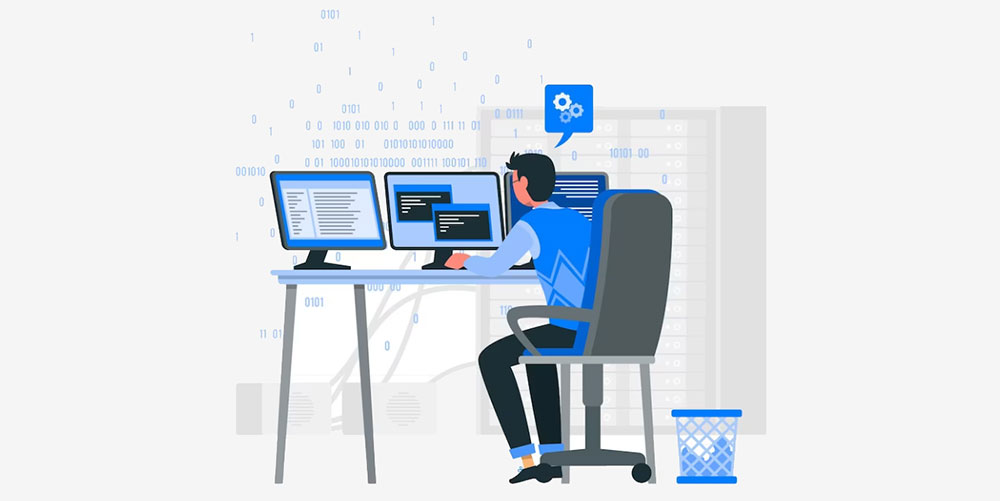Lean software development principles are best practices borrowed from the manufacturing industry. These principles were drawn from the lean development methodology of Toyota’s production system.
These have gained popularity among software developers within the agile community. Of course, there are differences between lean manufacturing and lean software development.
For example, lean manufacturing focuses on producing physical goods. But, in lean software development, the value is in the developer’s mind.
Still, applying the principles of lean development to software development has many benefits.
The Origin Of Lean Software Development Principles
The term lean software development comes from a book, written in 2003 by Tom and Mary Poppendieck.
Lean software development principles are a framework of values and best practices. These boost the success of the software development process.
Organizations that employ the agile methodology created the lean development methodology.
The Seven Principles Of Lean Software Development
There are seven lean software development principles. For the greatest benefits, it is best to hire a development team that uses these lean principles.
This article explains each principle and its application in the software development process.
Lean Development Principle 1: Eliminate Waste
Waste is anything that inhibits the ability to deliver what the customer wants in the best time frame. To eliminate waste, one must be able to recognize it and take necessary action.
To recognize waste ask yourself:
- Is it possible to bypass an activity to increase development speed?
- Is it possible to achieve the end goal without it?
There are seven wastes listed in Toyota’s school of lean manufacturing. These are:
- Waiting
- Defects
- Over-processing
- Motion
- Unnecessary transportation
- Inventory
- Overproduction
Collaboration is necessary to identify and remove waste from a project. Hold regular meetings and allow team members to share findings and suggestions.
This amplifies team learning and facilitates the implementation of improvements to the code.
How Waste Impacts Lean Software Development
Here are a few examples of how waste affects software development:
- Unclear or constantly changing requirements: This results in rework, delays, frustration, a lack of focus, and quality issues.
- Unnecessary code or functionality: This results in delays in getting the software to the customer and slowed feedback loops.
- Starting more than can be completed: This overwhelms the team and impedes the workflow. It results in context-switching and handoff delays.
- Bureaucracy: This slows down development.
- Slow or ineffective communication: Poor communication among team members results in delays and frustration. Poor communication with stakeholders negatively impacts the reputation of the developer.
- Incomplete work: This prevents the team from learning from the work and does not benefit the customer.
- Defects and quality issues: This results in customer dissatisfaction and rework or abandoned work.
- Task switching: Task switching leads to delays, communication breakdowns, poor quality, and low team morale.
- Delays in the development process: This slows the delivery time to the customer and slows down feedback loops.
Lean Development Principle 2: Build Quality In
Building quality into a piece of software is essential to eliminate waste. This prevents the developer from having to rework the software later.
When quality software isn’t produced it affects future tasks of the development team.
They will need to focus on fixing old work while juggling new work. This is also known as task switching, which is a costly distraction.
That is why, in lean development, quality concerns everyone. A high-quality output benefits the collective.
How can teams build quality into an app? Many software development teams have used the following lean development practices:
Pair Programming
This involves using two developers to work together on project requirements. Thus, the customer benefits from the combined skills and experience of both developers.
Test-Driven Development
This is where guidelines and metrics are set for developers before work commences. For example, setting criteria for code before writing it for the software.
Automated Testing
Automated testing handles manual processes that humans would find difficult. Automated testing speeds up tedious processes and administrative tasks.
Lean Development Principle 3: Create Knowledge
Writing code is a difficult process yet it often helps to create knowledge. Retaining such knowledge is vital to software development companies.
This is so because it increases the delivery speed and success of future projects.
Staff retention is also sensible business practice. It is costly to hire and train new staff in the business domain.
Lean companies must follow development practices that keep knowledge discoveries within the business.
This is achievable by using a combination of the following techniques:
- Knowledge sharing sessions to amplify learning
- Pair programming
- Wiki – to let the knowledge base build up in a cumulative way
- Code reviews
- Thoroughly commented code
- Documentation
- Training
- Use of tools to manage requirements or user stories
Lean Development Principle 4: Defer Commitment
It is wise to make careful plans. But, one must keep in mind that things do not always go according to plan.
So, making step-by-step plans using the waterfall development methodology has become obsolete. This approach is inflexible and does not add value to the customer.
Instead of predicting the work years in advance, it is best to defer the commitment. Make small steps, and reflect on the lessons learned.
What does it mean to defer commitment? This means:
- Not planning in excessive detail for months in advance.
- Not committing to an idea or project without grasping the business requirements.
- Scheduling irreversible decisions for the last responsible moment.
- For the most part, making reversible decisions.
- Avoiding decision-making that is difficult to reverse (locking in critical design features and code).
- Constantly collecting and analyzing info on important decisions.
This lean methodology helps development teams create flexible software. It’s possible to adjust this is software without wrecking earlier work.
This project management approach is vital in today’s volatile industry.
Lean Development Principle 5: Deliver Fast
Faster software delivery reduces the possibility of customers changing their minds. This delivers value to the customer and minimizes waste such as work piling up in queues.
Faster delivery means faster feedback. This allows teams to adapt the software where necessary, and fast.
This increases customer satisfaction and decreases the frustration of having too much work.
What are some factors that slow teams down? They include:
- Thinking and planning too far ahead about future requirements.
- Non-urgent response to blockers.
- Over-engineering business requirements and solutions.
What can help teams speed up delivery?
Gone are the days of working long hours and weekends. The lean way of manufacturing and production focuses on optimizing the whole project.
It does this by:
- Structuring the work so that each member knows what to do.
- Allowing each member to solve problems and adapt to changes without asking permission.
In today’s competitive industry, speed to market can give you the edge. Lean development supports agile delivery by the following concept:
- ‘Build a simple solution, deliver it to customers, and enhance it incrementally based on customer feedback.’
Lean Development Principle 6: Respect For People
A company that shows respect for its staff is more likely to have a motivated team. A motivated team is quick to adjust the software to reflect changes in the environment.
Motivation is the fuel that keeps a team fired up and ready to deliver. How is this achieved?
Respect People
Develop a management style that fosters engaged thinking and focuses on creating a great product. Here are some tips to help management teams achieve this:
- Be proactive and respectful when communicating with those you oversee.
- Provide staff with the needed expertise and support to accomplish their goals.
- Help staff to nurture their technical ability.
- Practice responsible planning and control.
- Provide teams with general plans and reasonable goals.
- Express trust in the team’s ability to self-organize to meet goals.
- Discuss work-related issues as a team.
- Encourage healthy conflict.
It is hard to set up a collaborative atmosphere and keep the balance of control within a project. The key is to allow development teams to make changes, but require them to report and explain their decisions to managers and you – the client.
Lean Development Principle 7: Optimize The Whole
Every business has a value stream. This is the process to design, produce, and deliver products or services to customers.
To deliver value to the client, companies need to optimize their value streams.
Although made up of code, the software is a product of many individuals completing their part of a chain. Software system defects tend to accumulate along this development chain.
This principle focuses on improving all the software development processes to cut system defects. In effect, it is a strengthening of the chain.
Do this by:
- Splitting big tasks into smaller ones
- Standardizing different stages of development
Additionally, cross-functional teams are a good way to optimize the whole. With this development methodology, everyone on the team can handle all parts of the chain.
It also means that there is a variety of perspectives on problems that arise. This makes it harder for defects to permeate the software system.
FAQs about lean software development principles
1. What is lean software development?
A methodology called lean software development aims to optimize the software development process by minimizing waste, maximizing value, and fostering better teamwork. It places a strong emphasis on team empowerment, customer satisfaction, and ongoing progress.
The Toyota Production System serves as a model for lean software development, which aims to foster a culture of productivity, excellence, and innovation in the industry.
2. How is lean software development different from traditional software development methods?
Conventional software development methods rely on comprehensive upfront planning, big teams, and a sequential approach to development. Lean software development, in contrast, places a strong emphasis on incremental and iterative development, small cross-functional teams, and a goal of providing consumers with value as soon as possible.
It emphasizes frequent testing, feedback, and continuous improvement and places higher importance on adapting to change than following a plan.
3. What are the core principles of lean software development?
The fundamental tenets of lean software development are to maximize the entire, remove waste, integrate quality throughout, deliver quickly, postpone commitments, generate knowledge, value people, and constantly improve.
These guiding principles help teams concentrate on the value of the customer, streamline procedures, give team members more responsibility, and foster a culture of ongoing corporate learning and development.
4. What is the purpose of eliminating waste in lean software development?
A fundamental tenet of lean software development is eliminating waste since it lowers inefficiencies, raises quality standards, and boosts customer satisfaction. Waste in software development includes things like extraneous features, wait times, flaws, and overproduction.
Teams can streamline their operations, shorten cycle times, and enhance the quality and worth of the finished product by locating and removing waste.
5. How does lean software development prioritize customer value?
Understanding the wants and goals of the client and producing a solution that satisfies those needs as quickly and effectively as feasible is how lean software development prioritizes customer value.
Customers are involved in the development process, data is used to influence decisions, and constant testing and feedback are used to achieve this. Teams may make sure that their work has the greatest impact and relevance for their customers by giving the value of the customer top priority.
6. What is the role of continuous improvement in lean software development?
Lean software development places a strong emphasis on continuous improvement, which is essential for developing a culture of quality, creativity, and learning.
Teams are encouraged to continually assess and enhance their procedures, resources, and working methods, using information and criticism to spot areas for development. This enables teams to continuously improve their approach to software development and stay adaptable to market and customer needs.
7. How does lean software development approach project planning and management?
Lean software development takes a modular, piecemeal approach to project planning and management, prioritizing work based on customer value.
This is accomplished via tools like user stories, Kanban boards, and Agile approaches, which place a strong emphasis on communication, openness, and ongoing input. Lean software development encourages teams to collaborate in order to streamline their operations and continuously enhance their capacity to provide consumers with value.
8. What are some common challenges of implementing lean software development?
Lean software development implementation frequently encounters obstacles like reluctance to change, a lack of support from stakeholders, difficulty tracking progress, and a lack of knowledge of lean principles.
Additional issues can include finding ways to reduce waste or having trouble segmenting the task into smaller sections. The entire team must be committed to overcoming these obstacles, and there must be open communication and a desire to always learn and advance.
9. What is the role of agile methodologies in lean software development?
Agile approaches contribute significantly to the development of lean software by offering a framework for putting lean ideas into reality. Agile places a strong emphasis on iterative development, teamwork, and client feedback—all fundamental elements of lean software development.
Teams may streamline their software development process, quickly provide value to consumers, and continually improve by utilizing agile approaches.
10. How does lean software development incorporate feedback from customers and stakeholders?
Lean software development prioritizes customer and stakeholder needs and includes them in the development process to include feedback from these groups. Techniques like user stories, prototyping, frequent testing, and feedback are used to achieve this.
Teams may make sure that their work is in line with market demands and that the finished product is pertinent and beneficial to their consumers by incorporating feedback from customers and stakeholders.
Additionally, this promotes customer and stakeholder trust and openness, strengthening connections and producing better results.
Ending thoughts on these lean software development principles
Are you looking to hire an app development company? If so, choose one that operates by these software development lean principles.
Development teams that follow these 7 principles tend to:
- Deliver a flexible software product
- Add value to you, the client
- Deliver in an agile and effective way
- Give your software product the ‘speed to market’ edge
- Minimize waste
- Deliver a high quality
Everyone wants to obtain value for their investment. This is especially true of those who seek a customer-oriented, flexible software system.
For this reason, it’s vital to educate oneself before making an investment. Use this article as part of the process, before taking the step of hiring an app development team.
So, when seeking to build an application, be sure to hire a team that operates by these seven lean principles.
If you enjoyed reading this article on lean software development principles, you should check out this one about software development contract templates.
We also wrote about a few related subjects like how to hire a web development team, software development budget, business pivot examples, financial projections for startups, financial software development companies, IT outsourcing failures, and risk management processes.
- What Is a War Room and How to Use it in Project Management - April 23, 2024
- Business model innovation: What it is and why it matters - April 20, 2024
- What Is A Risk Assessment Matrix And How To Use It - April 8, 2024









